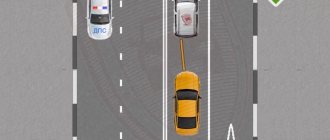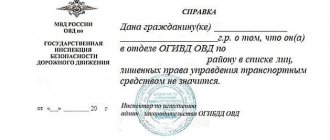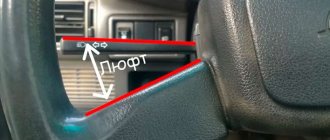Types of transport by destination
By purpose we mean the area in which a particular type of transport is used most often. That is, these can be vehicles:
- Special use. These include military (armored vehicles, tanks) and technological transport (track vehicles).
- Common use. This category includes all types of water, air and land transport used in trade and services. For example, a truck that transports goods is already a vehicle that fits into the general use category.
- Individual use, i.e. those vehicles that a person uses personally. The most common individual transport is a personal car or motorcycle.
In addition, there is a separate subcategory of public transport. This includes urban (public) transport, i.e. one that transports passengers along certain routes, according to a schedule and for a certain fee. These can be buses, trams, trolleybuses, etc.
Specifics
It should be noted that one of the key criteria for route vehicles is the availability of a working schedule. Why is this feature particularly highlighted in the definition? The fact is that while the vehicle is not on the route, it will not be considered public transport. For example, a passenger GAZELLE driving to a garage or parking place after a shift is an ordinary vehicle. There are certain concessions and privileges for public transport. For example, the driver of a route vehicle may ignore a number of prohibitory or injunctive signs. Special lanes are provided for this type of transport. They are distinguished by special markings and signs.
Types of transport by energy used
Depending on the energy used, there are vehicles:
- Propelled by wind power, for example, sailing ships (sailboats).
- Moved by muscular force (moved by a person or animal). The most common human-powered vehicle is the bicycle, which is powered by foot pedals. In addition, there are small rowing boats and velomobiles, less commonly used in everyday life, which are also propelled by human power. Vehicles driven by animals are discussed in more detail below under the appropriate heading.
- With a personal engine. This type, in turn, is divided into vehicles with thermal and electronic engines.
A heat engine vehicle is a mechanical vehicle that operates by converting heat into energy needed for movement. The heat source in such engines can be, for example, organic fuel. One of the most famous representatives of thermal engine transport is a steam locomotive, which is driven by processing (kindling) coal.
An electronic vehicle is one whose engine is powered by electricity. The main vehicles of this type are trams, funiculars, monorails, electric cars and electric ships.
Additionally
After signing the contract, the new owner is indicated in the PTS. Within ten days from the date of the transaction, the buyer must register the car. At the end of the established period, the former owner can check the fact of registration of the vehicle. In this situation, a signed agreement will be useful to the former owner. The citizen does not have a vehicle, but it is registered with him - what to do in this case? The former owner has the right to terminate registration by submitting a corresponding agreement to the traffic police. If the policy has not expired on the date of the transaction, the citizen has the right to return the money under it. It should be taken into account that the calculation of unused days begins on the calendar date following the day of termination of the insurance agreement.
Types of transport by travel environment
Depending on the travel environment, transport can be:
- land (road, rail, bicycle, pipeline, as well as transport driven by animals);
- air (aviation and aeronautics);
- water (surface and underwater vessels);
- space (devices and machines moving along airless paths);
- of a different type.
Other types of transport include stationary lifts (elevators), elevators, cable cars, etc.
Ground transportation
There are various land vehicles, which are divided according to a number of characteristics:
- By type of propulsion, there are caterpillar (some types of tanks, tractors and cranes), wheeled (cars, bicycles, mopeds, motorcycles), as well as ground vehicles that are driven by animals.
- Based on the number of wheels, there are: unicycles (one-wheeled vehicles), bicycles (two-wheeled vehicles), tricycles (three-wheeled vehicles) and ATVs (four-wheeled vehicles).
- According to the type of roads, there are railway and trackless vehicles. Rail transport refers to any vehicle that transports cargo and passengers along rail tracks. That is, these can be locomotives, carriages, trams, monorails and overpass transport. Trackless includes any ground transport, including vehicles that travel on land.
Categories of mechanical vehicles
Mechanical vehicle transport installations can be divided into 5 categories:
- Motorcycles, which are two-wheeled or three-wheeled motor vehicles and are characterized by the presence of a functional mechanical engine. It can be pneumatic, electric or internal combustion. To move vehicles, it is necessary to ensure that the driver is seated upright. The technique is characterized by the presence of side foot rests and the need to control the front wheels.
- Vehicles with a maximum weight of 3500 kg. The exception to this group is motor vehicles, which belong to group A. Not counting the driver, the car must have no more than 8 seats. This category includes motor transport units with a trailer. The total mass of such units should be no more than 750 kg. This group consists of cars weighing from 3500 to 7500 kg.
- Cars weighing no more than 750 kilograms.
- Compositions of vehicles with a tractor. The category also includes trucks that have a trailer.
Requirements for mechanical vehicle installations and their management features are put forward in accordance with the category to which they belong.
Automotive vehicles
Road transport is considered the most popular and widespread type of land transport. Automotive includes all types of means by which cargo and passengers are transported on trackless tracks. Many vehicles are intended not only for short-distance transportation, but also long-distance transportation, especially in cases where it is impossible to deliver passengers, products or materials in any other way.
All road transport is divided:
- For racing cars, which are most often used in car and sprint races (drag racing, auto slalom, etc.). These include, for example, monoposts - single-seater cars with open wheels, used in Formula 1 racing.
- For transport vehicles that serve only to transport cargo and passengers. Depending on the purpose of destination, they are passenger cars (personal cars), cargo (vans, tractors, etc.) and transport (buses, minibuses, etc.).
- For special machines, which, among other things, are equipped with additional equipment intended for certain purposes. These include, for example, ambulances or fire trucks.
L - motor vehicles
This category includes:
Mopeds, motorbikes, mokikis
L1 - two-wheeled vehicles whose maximum design speed does not exceed < 50 km/h and are characterized by:
- in the case of an internal combustion engine - with an engine displacement not exceeding < 50 cc. cm
- in the case of an electric motor - rated maximum power in continuous load mode, not exceeding < 4 kW .
L2 - three-wheeled vehicles with any wheel arrangement, the maximum design speed of which does not exceed < 50 km/h , and characterized by:
- in the case of an internal combustion engine with forced ignition - an engine displacement not exceeding < 50 cc. cm
- in the case of another type of internal combustion engine - a maximum effective power not exceeding < 4 kW
- in the case of an electric motor - rated maximum power in continuous load mode, not exceeding < 4 kW .
Motorcycles, scooters, tricycles
L3 or classic motorcycles are two-wheeled vehicles whose engine displacement (in the case of an internal combustion engine) exceeds > 50 cc. cm (or) the maximum design speed (with any engine) exceeds > 50 km/h.
L4 - three-wheeled vehicles with wheels asymmetrical with respect to the median longitudinal plane, the engine displacement of which (in the case of an internal combustion engine) exceeds > 50 cc. cm and/or the maximum design speed (with any engine) exceeds > 50 km/h . Essentially, these are motorcycles with a sidecar.
L5 or tricycles are three-wheeled vehicles with wheels symmetrical with respect to the median longitudinal plane of the vehicle, the engine displacement of which (in the case of an internal combustion engine) exceeds > 50 cc. cm and/or the maximum design speed (with any engine) exceeds > 50 km/h .
Quadricycles
These are four-wheeled vehicles, divided depending on engine size and weight into:
L6 - the unladen mass of such ATVs does not exceed <350 kg excluding the mass of batteries (in the case of an electric vehicle), the maximum design speed does not exceed <50 km/h , and characterized by:
- in the case of an internal combustion engine with forced ignition - an engine displacement not exceeding < 50 cc. cm
- in the case of another type of internal combustion engine - maximum effective engine power not exceeding < 4 kW
- in the case of an electric motor - the rated maximum power of the motor in continuous load mode, not exceeding < 4 kW.
L7 - ATVs other than those described in category L6, i.e. more than 50 cubic meters cm. Their unladen mass does not exceed <400 kg (550 kg for vehicles intended for the transport of goods) excluding the mass of batteries (in the case of an electric vehicle) and the maximum effective engine power does not exceed <15 kW.
This is interesting: Military education
Vehicles driven by animals
People learned to use animals as means of transportation when other types of land transport did not yet exist. Although years have passed and modern vehicles have appeared, many still prefer to ride a horse or harness an animal to a cart in order to transport any cargo.
Vehicles driven by animals include:
- Horse-drawn transport. People mainly use horses, dogs, camels, buffaloes, elephants and other mammals that can be tamed and trained for transportation as vehicles for moving cargo and passengers on carts, carts.
- Pack transport. The very name of pack transport comes from the packing baggage (pack), which is attached to the back of the animal. Such a vehicle is used in cases where horse-drawn transport is impractical, for example, in mountainous areas where the slopes are too steep and the roads are narrow, which makes the movement of carts and carts much more difficult. In addition to mountainous areas, pack animals are used in rural and swampy areas, as well as in deserts or in northern regions where roads are poor or practically non-existent.
- Horse transport, which is intended both for transporting passengers and for participation in special sports competitions and competitions. Horse-mounted transport mainly includes horses, camels and elephants.
Pipeline vehicles
The main purpose of pipeline vehicles is only to transport goods (chemicals, liquid and gaseous products) through special channels (pipes). This type of ground transport is the cheapest and most popular, which has no analogues in the world. For example, in the Russian Federation, pipelines are used to transport more than 95% of the oil produced.
In addition to being cheap, pipeline transport has other advantages:
- fast shipping;
- low cost of transportation;
- no loss of cargo during delivery;
- pipelines can be laid anywhere and any way (not counting air routes).
The main types of pipeline vehicles: sewerage, water supply, garbage chute and pneumatic transport (pneumatic mail).
Air Transport
Airplanes appeared at the beginning of the 20th century and quickly gained popularity throughout the world. This type of transport also includes helicopters, airships, airbuses, and airplanes. This is one of the fastest, but most expensive types of vehicles, which is intended for passenger and cargo transportation over long distances (more than 1 thousand km) by air. In addition, there are planes and helicopters that perform service functions (for example, putting out fires, spraying insecticides over fields, air ambulances, etc.). Typically, air transport is used by tourists and businessmen who want to quickly get to another country or even another continent. These vehicles transport large and heavy items, products with a short shelf life, as well as valuable items.
Although this type of transport is noisy and expensive, it is indispensable for scientific expeditions that go to distant continents or other inaccessible places that are difficult or impossible to reach in any other way.
Water transport
This is one of the classic types of vehicles. Such transport is intended for transportation along artificial (reservoirs, canals) and natural (lakes, rivers, seas, etc.) waterways.
Unlike air, water transport is one of the cheapest after pipeline transport. That is why almost everything is transported by such vehicles: from building materials to minerals. And such watercraft, such as ferries, are even capable of transporting other vehicles.
But passenger traffic has recently become significantly less. This is justified by the rather low speed at which ships move from one seaport to another.
The main types of vehicles moving along waterways: surface (boats, boats, liners, ships) and underwater vessels.
Space transport (spacecraft)
Space transport (spacecraft) is a mechanical vehicle designed to transport goods and passengers through airless space (in space). Of course, when talking about transporting people, it is meant that they are both passengers and the crew operating the spacecraft. Basically, such transport is intended for more specific purposes. For example, space stations are designed for various studies of terrain, oceans and the atmosphere that cannot be done on Earth, and satellites allow people to watch international television programs and make weather forecasts to meteorologists. In addition, some spacecraft are used for military purposes (surveillance of war zones, reconnaissance of the activities of other countries, detection of approaching space objects, etc.).
The main space transport can be distinguished: satellites, spaceships, orbital and interplanetary stations, planetary rovers.
N - trucks
N1 - small trucks with a technically permissible maximum weight of no more than < 3.5 tons. For example, the well-known Gazelle belongs to this type.
N2 - trucks with a technically permissible maximum weight of more than > 3.5 tons , but not more than < 12 tons. This includes the so-called “five-ton trucks,” for example IVECO.
N3 - large trucks intended for the transport of goods, having a technically permissible maximum weight of more than > 12 tons. An example is large four-axle dump trucks.
- M1, if the product of the number of passengers provided for by the design by the conditional mass of one passenger (68 kg) exceeds the estimated mass of cargo transported simultaneously with passengers;
- N if this condition is not met.
A vehicle designed for the transport of passengers and goods, having, in addition to the driver's seat, more than eight seats, belongs to category M.
Equipment and installations located on special vehicles (truck cranes, vehicles equipped with lifts with working platforms, tow trucks, etc.) are considered cargo.











